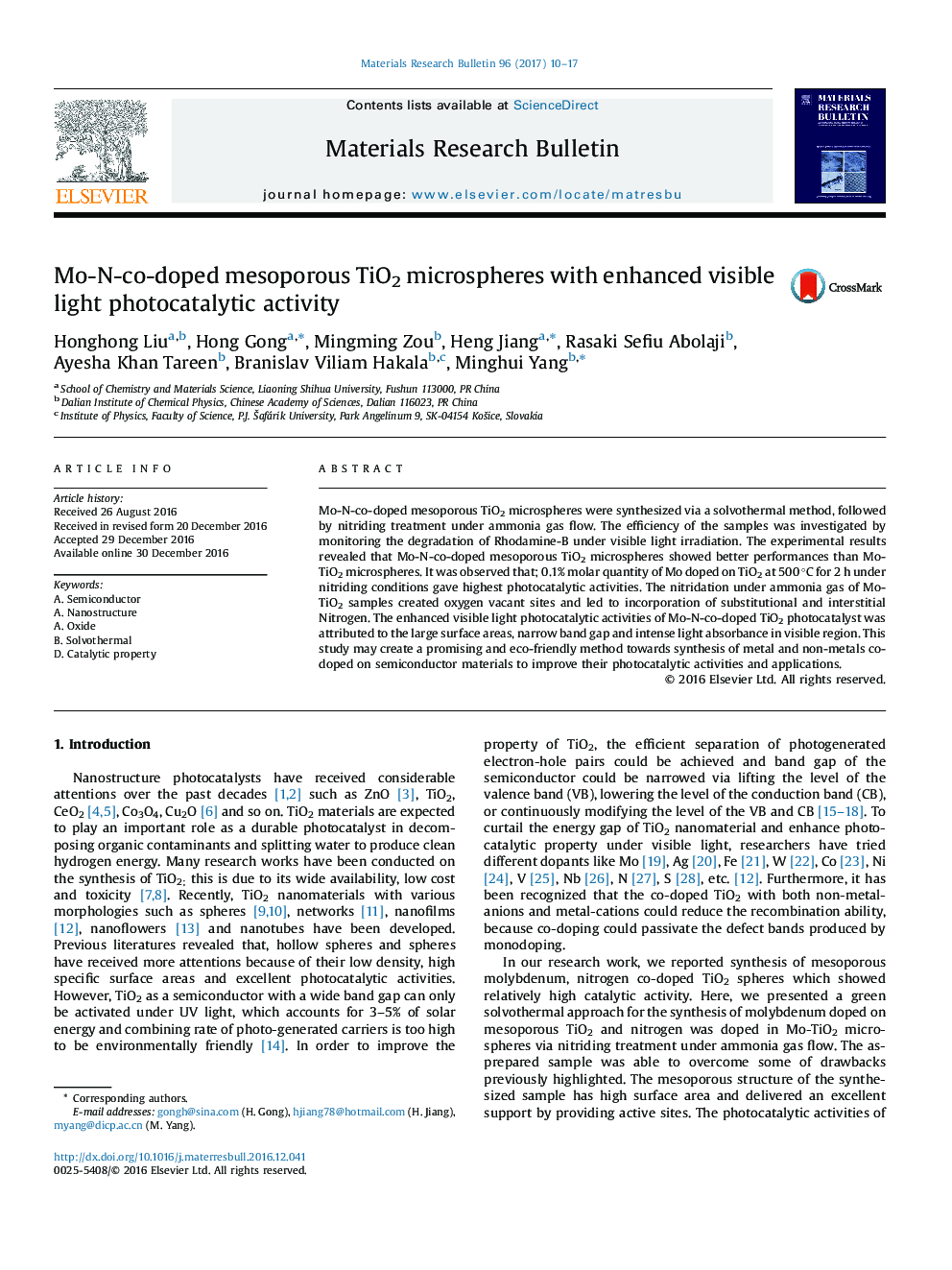| Article ID | Journal | Published Year | Pages | File Type |
|---|---|---|---|---|
| 5442103 | Materials Research Bulletin | 2017 | 8 Pages |
â¢The Mo-N-co-doped mesoporous TiO2 microspheres were synthesized via a solvothermal method and further nitriding treatment.â¢The properties of TiO2 microspheres can be tuned by Mo-N-co-doping.â¢Photocatalytic rate is much higher than Pure TiO2 catalyst powder and Mo doped TiO2 microspheres.â¢The higher activity is attributed to the large BET surface area, narrow band gap and intense light absorbance in visible region.
Mo-N-co-doped mesoporous TiO2 microspheres were synthesized via a solvothermal method, followed by nitriding treatment under ammonia gas flow. The efficiency of the samples was investigated by monitoring the degradation of Rhodamine-B under visible light irradiation. The experimental results revealed that Mo-N-co-doped mesoporous TiO2 microspheres showed better performances than Mo-TiO2 microspheres. It was observed that; 0.1% molar quantity of Mo doped on TiO2 at 500 °C for 2 h under nitriding conditions gave highest photocatalytic activities. The nitridation under ammonia gas of Mo-TiO2 samples created oxygen vacant sites and led to incorporation of substitutional and interstitial Nitrogen. The enhanced visible light photocatalytic activities of Mo-N-co-doped TiO2 photocatalyst was attributed to the large surface areas, narrow band gap and intense light absorbance in visible region. This study may create a promising and eco-friendly method towards synthesis of metal and non-metals co-doped on semiconductor materials to improve their photocatalytic activities and applications.
Graphical abstractDownload high-res image (192KB)Download full-size image
